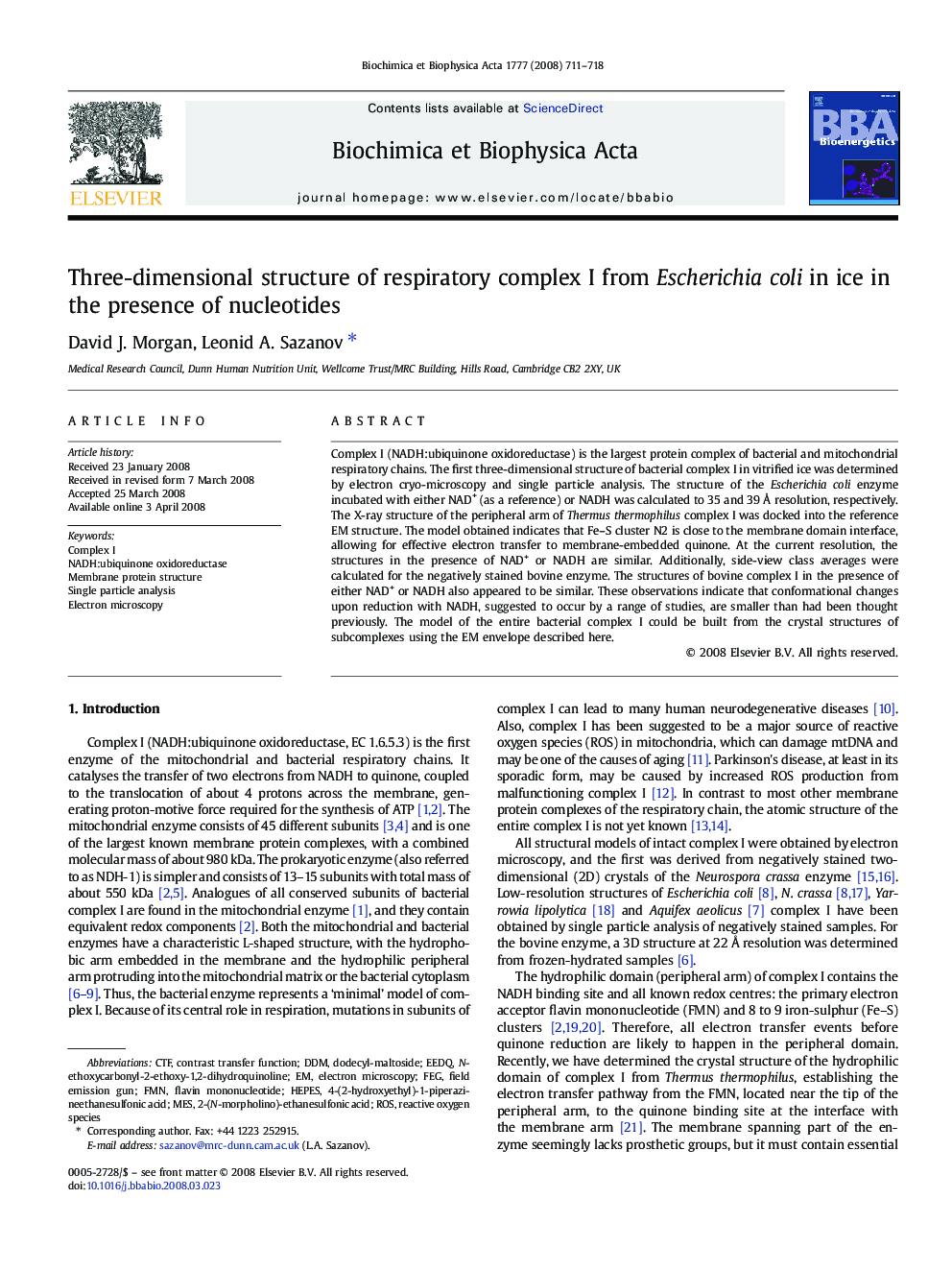| Article ID | Journal | Published Year | Pages | File Type |
|---|---|---|---|---|
| 8299130 | Biochimica et Biophysica Acta (BBA) - Bioenergetics | 2008 | 8 Pages |
Abstract
Complex I (NADH:ubiquinone oxidoreductase) is the largest protein complex of bacterial and mitochondrial respiratory chains. The first three-dimensional structure of bacterial complex I in vitrified ice was determined by electron cryo-microscopy and single particle analysis. The structure of the Escherichia coli enzyme incubated with either NAD+ (as a reference) or NADH was calculated to 35 and 39Â Ã
resolution, respectively. The X-ray structure of the peripheral arm of Thermus thermophilus complex I was docked into the reference EM structure. The model obtained indicates that Fe-S cluster N2 is close to the membrane domain interface, allowing for effective electron transfer to membrane-embedded quinone. At the current resolution, the structures in the presence of NAD+ or NADH are similar. Additionally, side-view class averages were calculated for the negatively stained bovine enzyme. The structures of bovine complex I in the presence of either NAD+ or NADH also appeared to be similar. These observations indicate that conformational changes upon reduction with NADH, suggested to occur by a range of studies, are smaller than had been thought previously. The model of the entire bacterial complex I could be built from the crystal structures of subcomplexes using the EM envelope described here.
Keywords
Related Topics
Life Sciences
Agricultural and Biological Sciences
Plant Science
Authors
David J. Morgan, Leonid A. Sazanov,
